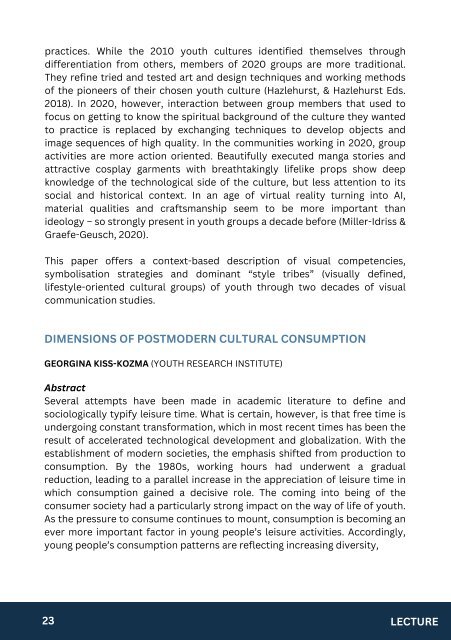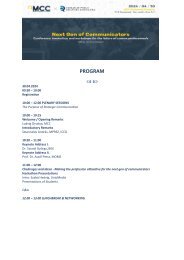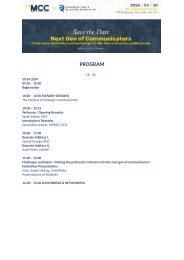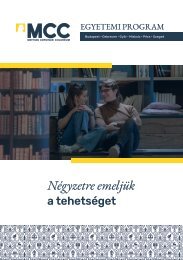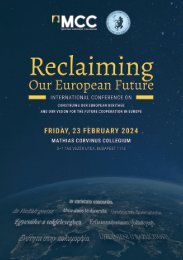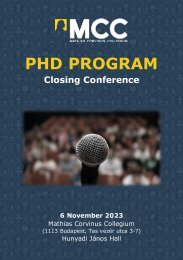Clout Culture - Youth Cultures in Changing Societes Conference
Create successful ePaper yourself
Turn your PDF publications into a flip-book with our unique Google optimized e-Paper software.
practices. While the 2010 youth cultures identified themselves through<br />
differentiation from others, members of 2020 groups are more traditional.<br />
They ref<strong>in</strong>e tried and tested art and design techniques and work<strong>in</strong>g methods<br />
of the pioneers of their chosen youth culture (Hazlehurst, & Hazlehurst Eds.<br />
2018). In 2020, however, <strong>in</strong>teraction between group members that used to<br />
focus on gett<strong>in</strong>g to know the spiritual background of the culture they wanted<br />
to practice is replaced by exchang<strong>in</strong>g techniques to develop objects and<br />
image sequences of high quality. In the communities work<strong>in</strong>g <strong>in</strong> 2020, group<br />
activities are more action oriented. Beautifully executed manga stories and<br />
attractive cosplay garments with breathtak<strong>in</strong>gly lifelike props show deep<br />
knowledge of the technological side of the culture, but less attention to its<br />
social and historical context. In an age of virtual reality turn<strong>in</strong>g <strong>in</strong>to AI,<br />
material qualities and craftsmanship seem to be more important than<br />
ideology – so strongly present <strong>in</strong> youth groups a decade before (Miller-Idriss &<br />
Graefe-Geusch, 2020).<br />
This paper offers a context-based description of visual competencies,<br />
symbolisation strategies and dom<strong>in</strong>ant “style tribes” (visually def<strong>in</strong>ed,<br />
lifestyle-oriented cultural groups) of youth through two decades of visual<br />
communication studies.<br />
DIMENSIONS OF POSTMODERN CULTURAL CONSUMPTION<br />
GEORGINA KISS-KOZMA (YOUTH RESEARCH INSTITUTE)<br />
Abstract<br />
Several attempts have been made <strong>in</strong> academic literature to def<strong>in</strong>e and<br />
sociologically typify leisure time. What is certa<strong>in</strong>, however, is that free time is<br />
undergo<strong>in</strong>g constant transformation, which <strong>in</strong> most recent times has been the<br />
result of accelerated technological development and globalization. With the<br />
establishment of modern societies, the emphasis shifted from production to<br />
consumption. By the 1980s, work<strong>in</strong>g hours had underwent a gradual<br />
reduction, lead<strong>in</strong>g to a parallel <strong>in</strong>crease <strong>in</strong> the appreciation of leisure time <strong>in</strong><br />
which consumption ga<strong>in</strong>ed a decisive role. The com<strong>in</strong>g <strong>in</strong>to be<strong>in</strong>g of the<br />
consumer society had a particularly strong impact on the way of life of youth.<br />
As the pressure to consume cont<strong>in</strong>ues to mount, consumption is becom<strong>in</strong>g an<br />
ever more important factor <strong>in</strong> young people’s leisure activities. Accord<strong>in</strong>gly,<br />
young people’s consumption patterns are reflect<strong>in</strong>g <strong>in</strong>creas<strong>in</strong>g diversity,<br />
23<br />
LECTURE


